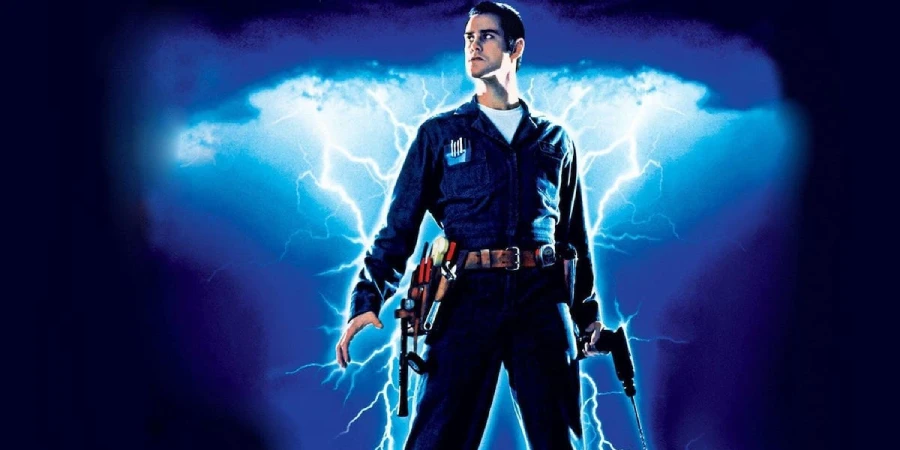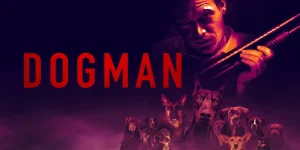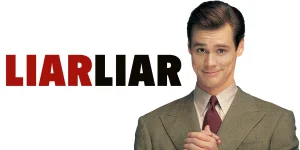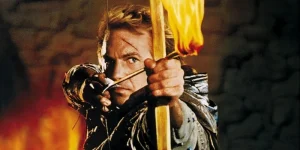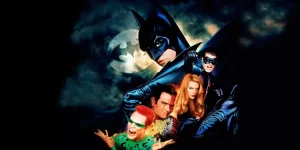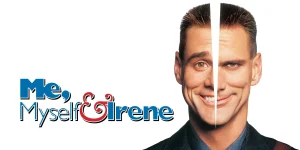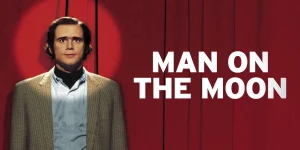The Cable Guy (1996), directed by Ben Stiller, is one of those dark comedies that lives in the weird space between hilarious and deeply unsettling. Starring Jim Carrey at the peak of his 90s energy, the movie is equal parts comedy, thriller, and cautionary tale about loneliness and obsession.
Table of Contents
ToggleDetailed Summary
Meet the Cable Guy
Steven Kovacs (Matthew Broderick), freshly single after a breakup with his girlfriend Robin (Leslie Mann), moves into a new apartment. When he calls to get his cable hooked up, he meets the eccentric and overly friendly cable installer Chip Douglas (Jim Carrey). At first, Chip seems harmless, even funny, but his clingy behavior quickly escalates.
The “Free Cable” Deal
Chip offers Steven free premium cable if he just considers him a friend. Steven reluctantly agrees, thinking it’s just a quirky interaction. Chip, however, takes this as an open invitation to become Steven’s best friend, showing up at odd hours, forcing himself into Steven’s personal life, and inserting himself into Steven’s attempts to get back together with Robin.
Things Get Darker
Steven realizes that Chip’s “friendship” is actually dangerous. Chip sabotages Steven’s relationships, humiliates him at a family dinner with Robin, and eventually frames him for criminal activity. The movie shifts from light comedy to psychological thriller as Chip’s obsession turns violent and controlling.
The Televised Climax
The movie’s climax takes place at a massive satellite dish where Chip has kidnapped Robin. He plans to broadcast his “big show” by interrupting national television, symbolizing his twisted view of friendship and fame. Steven confronts Chip in a tense fight at the top of the satellite dish, with Robin’s life on the line.
Movie Ending
In the finale, Steven manages to save Robin and fight off Chip. The police arrive, and Chip, realizing his arrest is inevitable, delivers one final dramatic gesture: he lets himself fall from the top of the satellite dish. However, instead of dying, he crashes through part of the dish and survives with serious injuries. As he’s carried away by paramedics, Chip tells Steven, “I’m just messing with you,” but it’s unclear whether he truly means it or not.
The most ironic and haunting moment comes when Chip, strapped into the ambulance, tries to befriend the paramedic by calling him his “buddy.” The cycle of his obsession is set to continue, leaving the audience uneasy about how many other “friends” Chip might latch onto in the future.
Are There Post-Credits Scenes?
Yes, technically there is a little stinger. During the end credits, we see Chip in the back of the ambulance still trying to connect with his rescuer, asking the paramedic if he’s “his buddy.” It’s not a Marvel-style bonus scene, but it reinforces the unsettling theme that Chip will never stop seeking someone new to latch onto.
Type of Movie
The Cable Guy is a dark comedy/psychological thriller. It has the absurd slapstick moments Jim Carrey is known for but also leans heavily into unsettling territory, making it one of his most divisive films.
Cast
- Jim Carrey as Chip Douglas (the cable guy)
- Matthew Broderick as Steven Kovacs
- Leslie Mann as Robin Harris
- Jack Black as Rick (Steven’s best friend)
- George Segal as Steven’s father
- Diane Baker as Steven’s mother
- Ben Stiller (director) also makes cameos as the Menendez-style twin brothers seen on TV.
Film Music and Composer
The score was composed by John Ottman, blending suspenseful tones with quirky elements to match the film’s odd blend of thriller and comedy. The soundtrack also includes notable 90s tracks like Filter’s “Hey Man, Nice Shot” and Jim Carrey’s own absurd karaoke performance of Jefferson Airplane’s “Somebody to Love.”
Filming Locations
The movie was primarily shot in Los Angeles, California, including recognizable suburbs and cityscapes. The massive satellite dish in the climax was filmed at the Moreno Valley Satellite Earth Station, providing the perfect eerie setting for the film’s finale.
Awards and Nominations
The film didn’t receive major award recognition, but it remains notable for the fact that Jim Carrey was paid a record-breaking $20 million salary, a huge controversy at the time.
Behind the Scenes Insights
- Jim Carrey improvised many of his scenes, including the medieval knight duel and the karaoke sequence.
- Ben Stiller originally wanted Chris Farley for the role of the cable guy, but Carrey’s interest completely changed the project’s tone.
- Matthew Broderick admitted in interviews that he found it hard to keep a straight face acting alongside Carrey’s unpredictable energy.
- The medieval jousting scene was filmed at Medieval Times in Buena Park, California—yes, the real tourist attraction.
Inspirations and References
The movie draws inspiration from classic stalker thrillers like Cape Fear but filters them through a comedic lens. It also reflects growing 90s anxieties about technology, media saturation, and isolation in a cable-driven culture.
Alternate Endings and Deleted Scenes
- An alternate ending was shot where Chip actually dies after falling from the satellite dish, but test audiences found it too dark, so the studio opted for the “he survives” ending.
- Several deleted scenes expand Chip’s backstory, including a scene showing his traumatic childhood glued to television as his only form of companionship.
Book Adaptations and Differences
There’s no direct book adaptation, but the film is heavily inspired by the cultural climate of the 90s and the French comic-like absurdity of Carrey’s physical comedy.
Memorable Scenes and Quotes
Key Scenes
- Chip’s medieval duel with Steven at Medieval Times.
- The karaoke scene where Carrey belts out “Somebody to Love.”
- The basketball game where Chip humiliates Steven and his friends.
- The final satellite dish showdown.
Iconic Quotes
- Chip: “Somebody to love!” (singing off-key, aggressively).
- Chip: “I can be your best friend… or your worst enemy.”
- Steven: “You’re out of your mind!”
- Chip: “Am I? Or am I so sane that you just blew your mind?”
Easter Eggs and Hidden Details
- The “Sweet 16” basketball jersey Chip wears is a nod to Jim Carrey’s Ace Ventura character, who also had a sports obsession.
- Ben Stiller’s cameo as the Menendez-like twins on trial adds another darkly comedic subplot about media obsession.
- Chip’s name constantly changes depending on the situation, hinting at his unstable identity.
Trivia
- This was Jim Carrey’s first real attempt at a dark role, which shocked fans used to his goofy characters in Ace Ventura or The Mask.
- Jack Black, who plays Steven’s best friend Rick, was still relatively unknown at the time.
- Jim Carrey’s $20 million paycheck was the first time an actor received that much for a single role, setting a Hollywood precedent.
Why Watch?
If you want a Jim Carrey performance that’s equal parts hilarious, creepy, and unforgettable, The Cable Guy delivers. It’s not a typical 90s comedy—it’s stranger, darker, and ultimately more thought-provoking, especially in its commentary on loneliness and media addiction.
Director’s Other Movies
- Reality Bites (1994)
- Zoolander (2001)
- Tropic Thunder (2008)
- The Secret Life of Walter Mitty (2013)

